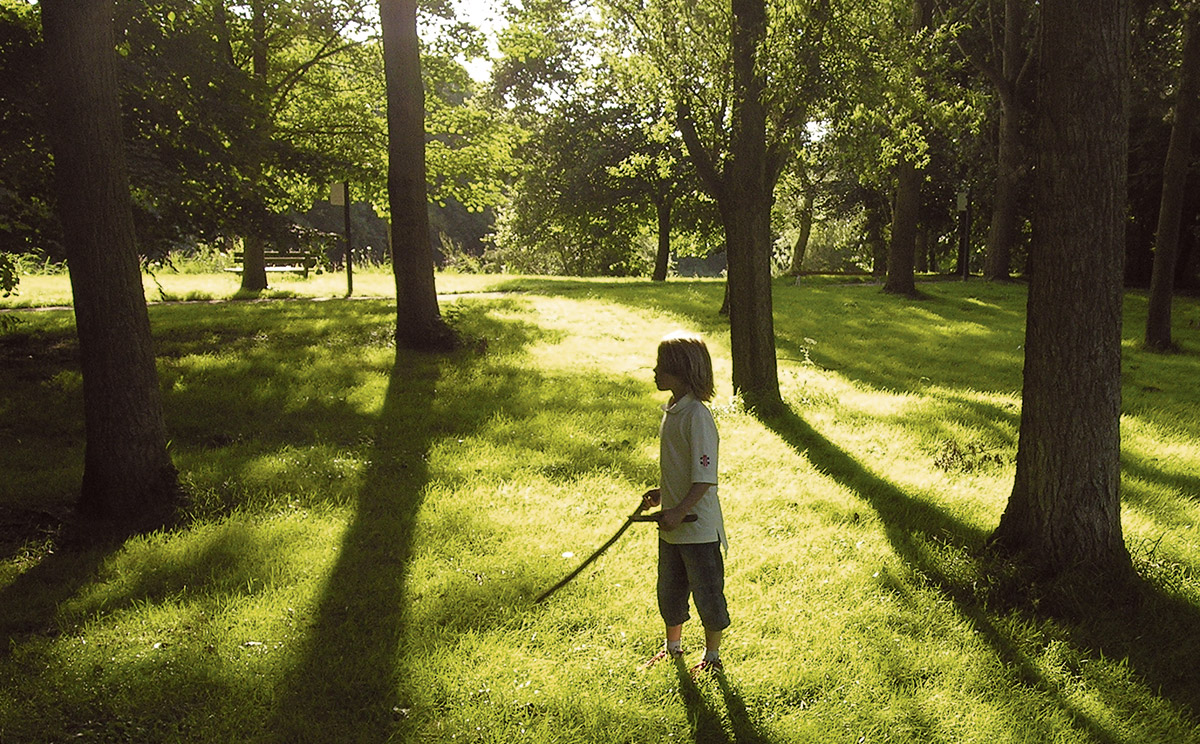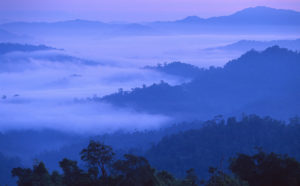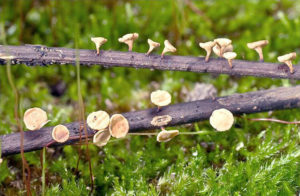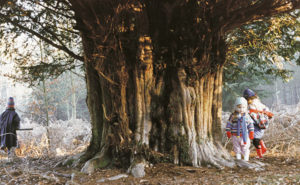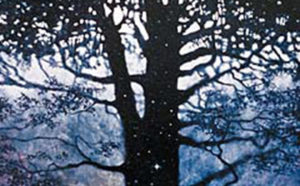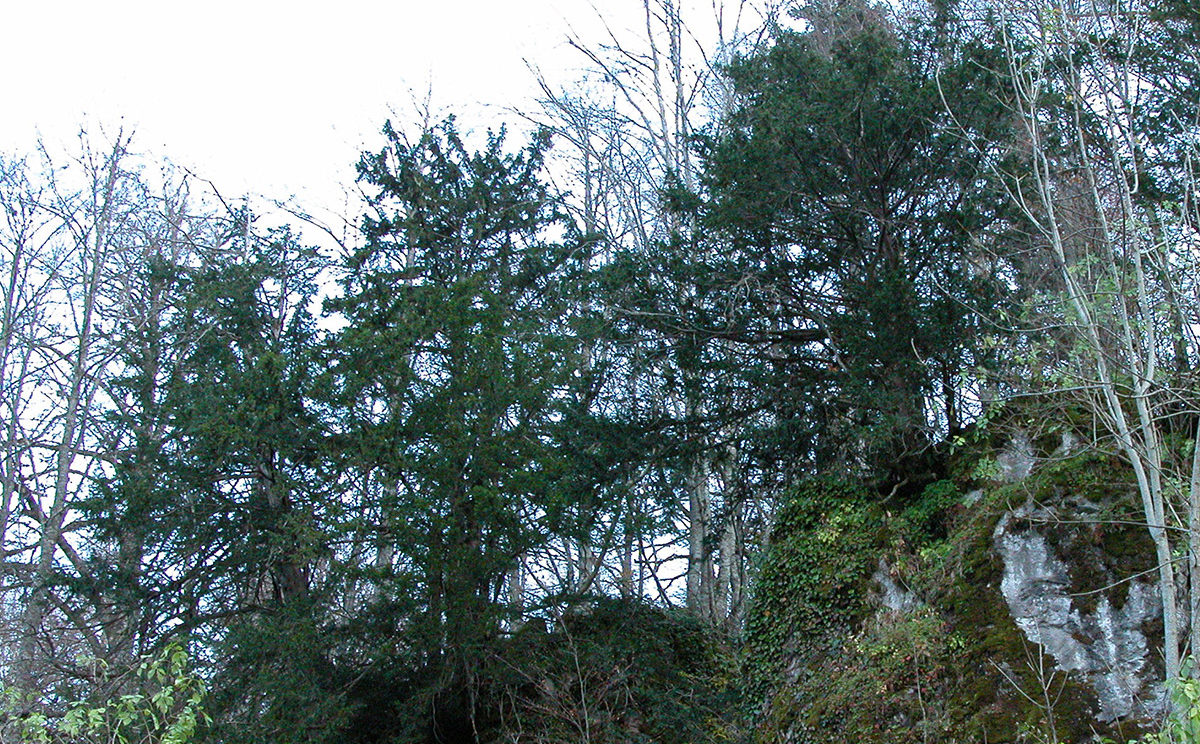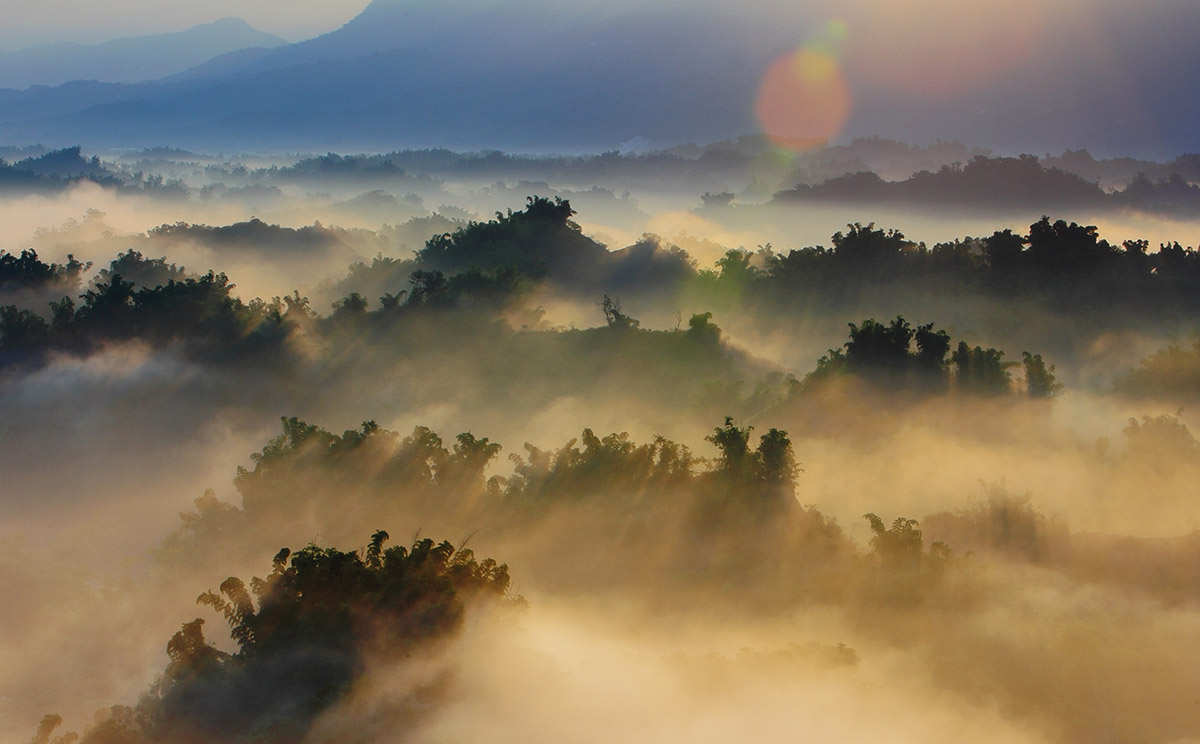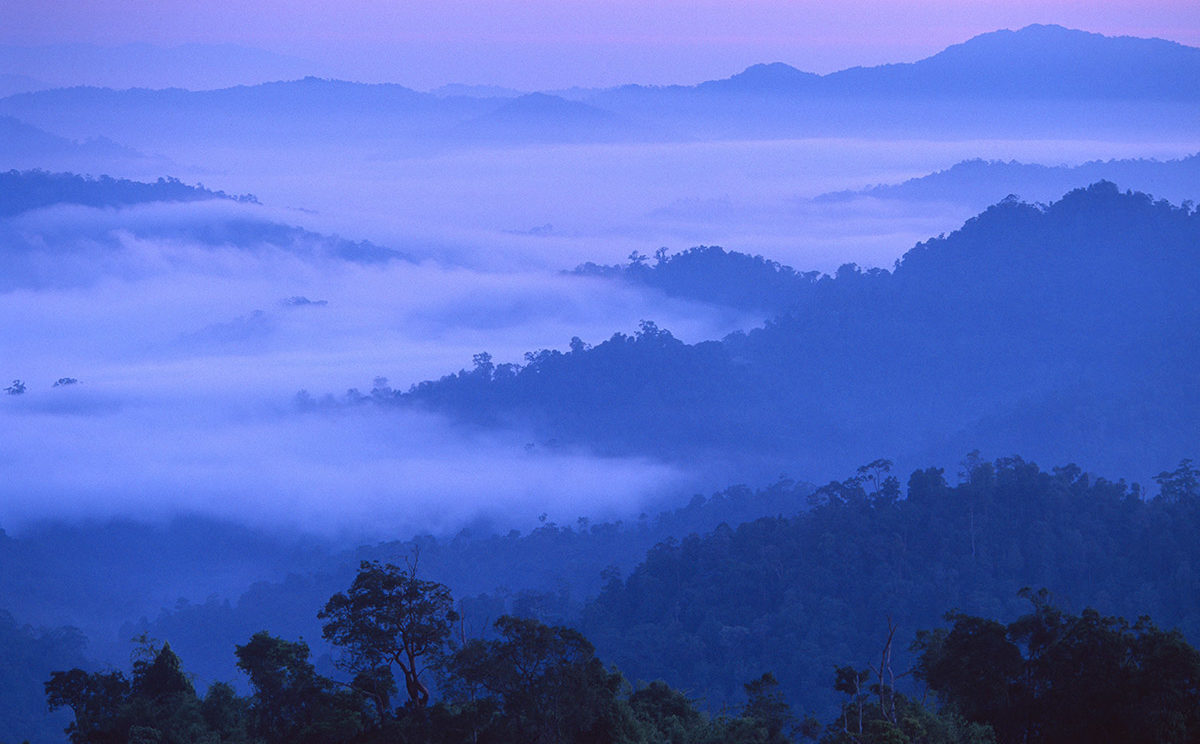Trees for Life – (2) The inside
Being grateful to the trees is more than justified: only due to the forests of the Carboniferous period did the Earth reach, some 300 million years ago, the oxygen levels in the atmosphere that allow animal life to exist at all.
Today, forests still attract the life-giving rain, regulate the climate, host biotopes for countless plant and animal species, prevent soil erosion, strengthen the Earth’s magnetic field, balance air electricity, and serve as antennae for cosmic formative forces which are required everywhere in the biosphere. We humans are short guests on this planet, and before we arrived it was trees who prepared the Earth.
Guiding humanity’s development
Biologically, the tree plays a role in the collective consciousness of all primates. Walking upright developed after ‘leaving the trees’ and conquering the steppes, but the trees never ceased to offer essential protection: from coldness and wind, sun and heat, rain and natural enemies.
Next, the two-legged hunter needed hunting weapons, spears and bow and arrows, and again the tree was experienced as the benevolent source of what was needed. Then came the taming of fire, and wood from the trees became more important than ever before. The logistics of keeping a stash of firewood through all seasons, not to let the precious fire extinguish, taught man to plan ahead.
Much later, in the Neolithic age, when creative landscaping began, that is, the building of huts, barns, stables, bridges etc., the usage of wood – and different kinds of wood – broadened enormously. All stages of pre-history – Stone Age, Bronze Age, Iron Age – are somewhat misnamed because the tools, whether they had been made of stone, bronze or iron, primarily worked wood, the essential material of human life.
All of this, of course, found its reflection in the psyche of early humans. And even more so the awesome appearance and living presence of deep forests and their ancient guardian trees. And from their viewpoint, too, the encounter of tree and human was a very special one: other mammals usually just visited to browse on the leaves or find shelter. But the human species developed a unique trademark: to be the only creature which could give something back consciously. Singing songs to the trees, bringing offerings, watering them, collecting seeds for propagation, caring for little seedlings as if they were their own children.
Tree as sacred
The first pictoglyphs of sacred trees stem from the Palaeolithic period, well over 20,000 years ago. When humans began agriculture, in the Neolithic, plant mythology multiplied immensely. Plants and trees which give food to humans are worshipped in these myths as spiritual entities who sacrifice their intactness or even their lives so the humans can sustain their physical bodies.
But these beings are transformed and reborn – cyclically, in the course of the seasons. The ancient myths of fertility deities and benefactors of humankind – such as Osiris in Ancient Egypt or Dionysos in Greece – have their roots here.
But as soon as the honoured plant is a tree, there is more in focus than just food. With the tree, early religion enters the spiritual sphere. Osiris, whose spirit resides in the acacia tree, becomes the guide who leads souls through the territories of the afterlife.
Also in Ancient Egypt, the sycomore fig was the place to encounter the sky goddess Hathor. She gave essential gifts to the newly deceased: the breath of life, the water of life, and some of her metaphysical figs – astral power food for the journey through the netherworlds. Further north, in North America and across Eurasia (from the British Isles to Japan), the yew tree mysteries served similar purposes.
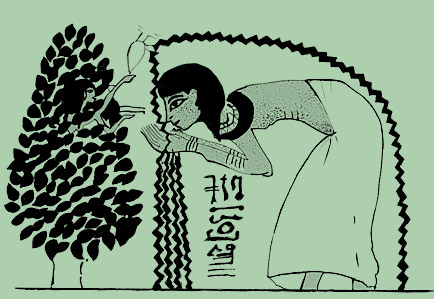
In this way, trees have always been the guardians of the gates, not only at the ‘exit’ of this earthly life (burial rites) but also at the ‘entrance’ (celebrating birth), and during its course of transformations and initiations.
In the temperate zone of the northern hemisphere, for example, there is a multitude of distinct customs around the birch tree as the protector of young life. Cradles, children’s beds and amulets were made of birch wood to call upon the benevolent spirit of this tree. The Germanic rune berkana means birch tree, motherhood, protection. In Switzerland, a pear tree was traditionally planted at the birth of a girl, an apple tree for a boy.
The World Tree
But not only single humans received blessings from the trees, whole cultures did too. The oldest texts about this come from Sumer which is generally known as the ‘cradle of civilization’ because essential elements of human culture, like schools, division of work or the sailing boat, appeared there for the first time in history.
The Sumerian cuneiform tablets describe the World Tree: it stands at the centre of the Earth, carries the skies, its crystal roots reach into the Underworld, at its core is the abode of the primeval mother and her son. The spirit of the tree is Ea, the deity of wisdom, who bestowed culture, ethics and law on the humans. The Sumerian sign for this tree means ‘house of wisdom, of strength, of abundance’.


The Sumerian epic of Gilgamesh contains more lines about the star-bearing World Tree with its fruits and buds made of crystal. Wondrous birds live in it who build nests of gemstones.
The cosmological meaning of this tree cannot be made more plain than through the mentioning of crystals which are used by supernatural winged beings to create new structures. We come to witness the work of the astral architects in laying the foundations of Earth’s creation. This is a process which did not only occur a few billion years ago along the linear time scale, but which happens continuously in the realm of myth.
True myths describe events which are valid perennially because they occur outside of linear time. Contrary to legends which relate to historical events that happened once on the time axis. In every moment there is a connection, a portal to the ‘space’ beyond time, a concept long encountered by modern physics (e.g. string theory).
Living trees are able to significantly heighten the sensitivity and energy flow of human beings, bringing a higher level of consciousness into closer reach. Within this enhanced awareness, the human mind can experience why so many sanctuaries of the Old World have been described as the ‘centre of the world’.
Wherever the power of a place enables man to step through the tiny portal of the present moment into the immeasurable space of infinity, there the human being finds itself at the innermost centre of creation. Various sources from around the world describe the World Tree as standing at the centre of the world, being the very axis around which it turns (axis mundi), and all living things of the biosphere of our planet are its leaves and fruits.

Lore of Yggdrasil
Only in this global context of this aspect of nature religion can we begin to make sense of the Old Norse World Tree called Yggdrasil. The body of evidence is very small and fragmented, due to the intolerant form of Christianisation of Europe. The notion of Yggdrasil mostly survived in medieval scriptures on distant Iceland.
The Oxford language scholar Ursula Dronke says in her deep analysis of the Eddas that the statements about the World Tree therein, and the special way of their encoding, suggest that the lore of Yggdrasil was a ‘religious mystery’. That means: a secret knowledge to be initiated into, something the Christian scribe writing down the old songs and sagas in the 13th century would not have been entrusted with. This, however, led to a profound misunderstanding which is still widespread to this day: the misinterpretation of the Nordic World Tree as ‘the world ash’.
Already in the Middle Ages, no outsider would have been able to understand the intricacies of Nordic poetry. Its masters, the Skalds, were well-trained professional poets like the Celtic bards, and they worked chiefly with metaphors, synonyms and their trademark technique, the so-called kenning.
A kenning replaces a simple noun with an abstract sentence or a composite noun. A ship becomes a ‘wave horse’, eyes are ‘forehead moons’. Nothing is mentioned by its name, encoding is standard, and it usually requires a deep knowledge of Norse mythology – something the Christian ethnologists of the 19th century simply did not have. Hence, the ‘wintergreenest needle ash’, a kenning for the World Tree, was translated into ‘ash tree’ although ash is not evergreen nor has it needles, nor is there any significant connection between ash and the world-wide body of World Tree lore to be found. But once mis-translated, the rumour spread.
Other mistranslations regarding Yggdrasil
In the cultural history of trees we encounter many such translation errors; it began with Pliny the Elder in the 1st century a.d. and continued with the translation of the Old Testament which turned all sacred trees mentioned therein into ‘oaks’.
The old Norse texts, however, are pretty clear; verse 2 of the Völuspá says: Nío man ek heima, nío ívidiur – ‘Nine worlds I remember, nine wood-ogresses… Nowadays, everybody knows what an ogre is (thanks to the Shrek movies). In the context of old Germanic tradition it brings us to the notion of nature spirits, and with the prefix ‘wood’ to tree nymphs or dryads. In any case the Icelandic word is feminine and plural. ‘Under the ground’ points to the roots.
And, most importantly, vid is ‘tree’, but ívid is Icelandic for ‘yew tree’. The nine ívidiur are female spirits of yew tree roots. This links the World Tree to the deity Heimdallr of the Icelandic sagas. Heimdallr is not the Viking-type martial warrior guarding the rainbow bridge to Asgard you might have seen in illustrations. Heimdallr is the guarding aspect of the World Tree itself: Heim-dallr literally means ‘world tree’! Other Icelandic sources state that he has been birthed by nine ívidia, ‘yew roots’. (Compare Yew and misconceptions in religious history)
There is much more to tell but the question is: What does it matter today? What can we do with it, where do we stand?
Living mythology today
Living trees are excellent teachers for the change of consciousness humanity needs to make. Just go to the nearest woodland and let yourself be reminded how ancient the friendship of human and tree really is (despite the last three millennia of comparative darkness). The forest is proven to be full of life force – go and recharge! Go and meditate. Let the forest remind you that all of life is in a state of continuous change.
One, perhaps unexpected, constant throughout human (pre)history is the ancient friendship of man and tree. It’s true, over the last three millennia, man has also become the forest’s worst enemy (and hence his own). But from the viewpoint of the trees, humans are the only species which can consciously care for them.
We can look across history and around the world today, and what we see is that the oldest and most magnificent trees have become what they are in the care of humans. The most awesome ancient yews of Britain have survived in churchyards, the ancient olive trees of the Mediterranean thrive in their close relationship with their carers, even the stunning giants in the wildwoods of North America could grow to monumental glory because indigenous peoples have, over millennia, tentatively engaged with forest ecology – not performing complete non-intervention but insightful love and tender care.
We can summarize that in many cases it was humans who have set the stages where trees can unfold to their fullest potential. We are, after all, not such a useless species – once we put a brake on our ego!
The next generation
So, let us pass on the importance of this connection to the next generation! Through outdoor education, psychology has recently begun to see that all living beings are a part of us. A child discovers a new part of itself every time it encounters an animal or a plant. And often children express this in play, by wanting to be a tiger or a horse, a bird, a fish or a crocodile. Soon after ‘mama’ and ‘papa’, animal names form part of the earliest vocabulary of toddlers.
Of course animals are closer to us emotionally, but plants and trees aren’t all that different. In the presence of an oak we discover, as grown-ups too, the finest sensations, new variations of our sense of identity. And one such variation of our self can only be experienced beneath an oak tree.
There is another world waiting for us at the birch tree, just as rooted in our ancient soul, just as unawakened. Elm, beech and maple too are gates to other dimensions of our greater self. Beneath each tree there is an experience of self-discovery awaiting us – are you ready to explore it?
The Earth is not just physical, it is also a landscape of the soul. The segregation of inner and outer is imaginary. Wherever humans destroy the land and turn it into a desert they seal an interior emptiness in which there is no life left.
Just now the frightening truth of a struggling physical Earth is an exact reflection of the interior devastation of collective humankind. To look the other way while the Earth is burning we have invented computer games and an array of colourful gadgets and distractions. We are cave men who like it comfortable in our numbed pupation. But not for nothing has the soul been named after the butterfly, it also has wings! They grow from the heart, and one day the cocoon will be too small, we will have to break it open. Then we will begin to stand up for all life.
Whenever you feel your wings twitch, don’t hesitate! The light is always there. A radiant heart glows everywhere – trees love that.
Article by Fred Hageneder in Caduceus 87, winter 2013
Go to Trees for Life – Part 1: The outside
References
Hageneder, Fred, 2013. ‘Trees – for Life! (part 1)’, Caduceus, 86: 6-9
Hageneder, Fred, 2000. The Spirit of Trees: Science, Symbiosis and Inspiration. Floris Books, Edinburgh
Hageneder, Fred, 2001. The Heritage of Trees: History, Culture and Symbolism. Floris Books, Edinburgh
Hageneder, Fred, 2007, 2011. Yew – A History. The History Press, Stroud
Hageneder, Fred, 2013. Yew (Botanical Series). Reaktion Books, London
Ursula Dronke, 1997. The Poetic Edda, Band 2: Mythological Poems. Oxford University Press
